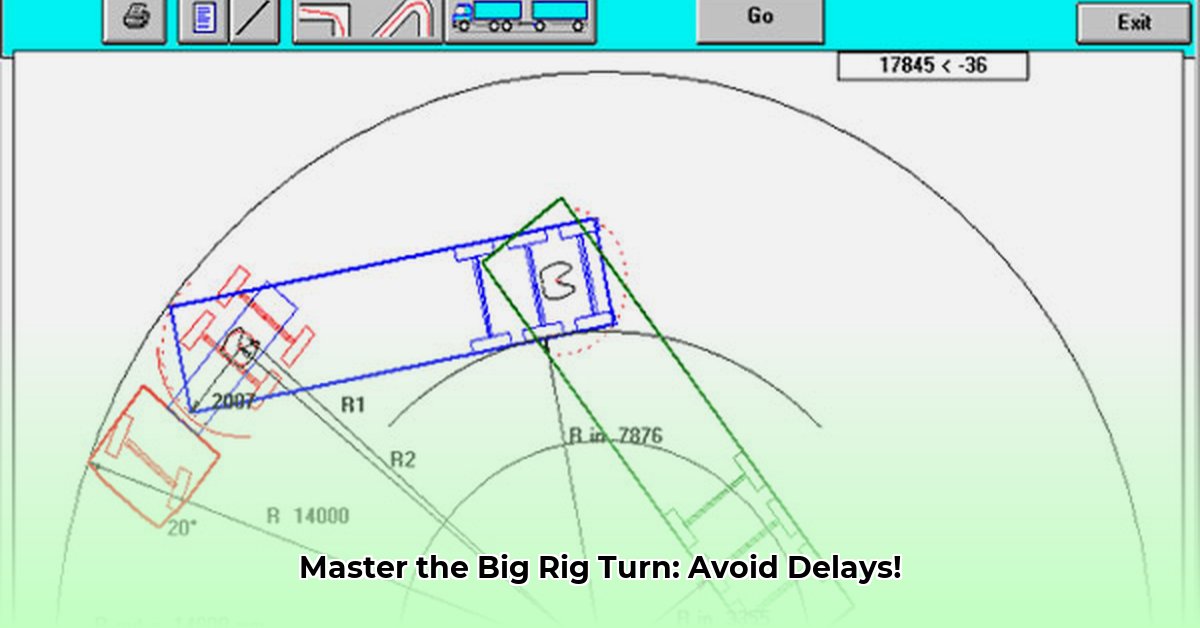
Let's be honest: maneuvering a massive semi-truck isn't like driving your car. Understanding a semi-truck's turning radius—the space it needs to make a complete turn—is critical for on-time deliveries and preventing accidents. This guide provides practical steps to ensure your deliveries go off without a hitch! For more on maneuvering large vehicles, check out this helpful guide on backing up techniques.
Understanding Turning Radius and Road Space
A semi-truck's turning radius isn't a fixed number. It's the space needed for a complete turn, significantly impacted by the trailer's connection to the cab. Imagine a circle representing the truck's path as it turns; the circle's radius is the turning radius. The road's width must accommodate this circle; insufficient space leads to problems. This is why understanding turning radius is crucial for delivery route planning. Did you know that a longer wheelbase significantly increases the turning radius? This seemingly small detail can drastically affect your delivery efficiency.
Pre-Delivery Site Check: Your Success Checklist
Before any delivery, a thorough site check is essential. This checklist ensures smooth, safe deliveries.
1. Measure Road Width: Use a tape measure to carefully measure road width at several points, especially around corners. Note any narrow spots. Accurate measurements are key to preventing delivery delays stemming from unexpected road constrictions.
2. Spot Obstacles: Identify any potential obstructions: parked cars, low-hanging branches, construction, or uneven pavement. Even seemingly minor obstacles can cause major delays. Accurate identification of obstacles is paramount to successful delivery route planning. For example, a single, poorly-placed parked car could render a delivery point inaccessible.
3. Check for Overhead Clearances: Measure the height of potential overhead obstructions (bridges, power lines). Underestimating this can cause serious damage. Knowing this measurement is critical for safe route planning.
4. Assess the Grade: Steep inclines or declines dramatically impact turning ability. Steeper grades require more space and increase the risk of accidents.
5. Corner Maneuvering: Knowing the specific semi-truck's turning radius is essential when approaching corners. The tighter the turn, the more space needed.
6. Risk Assessment: Evaluate potential risks using the matrix below. This is a crucial step in mitigating potential delays and accidents.
| Risk Factor | Likelihood (High/Medium/Low) | Impact (High/Medium/Low) | Mitigation Strategy |
|---|---|---|---|
| Narrow Road | High | High | Choose alternative delivery; route planning adjustments; smaller truck |
| Low Overhead Clearance | Medium | High | Choose a different route; schedule delivery during off-peak times |
| Obstacles on the Route | Medium | Medium | Communicate with drivers; adjust route in real-time; remove obstacles if possible |
| Driver Error | Low | Medium | Thorough driver training; advanced driver assistance systems |
| Unexpected Events | Low | High | Contingency plans; flexible delivery schedules |
Reducing Risks: Planning for a Smooth Delivery
Your risk assessment informs your mitigation strategy. This might include:
- Alternative Delivery Options: Consider smaller trucks or breaking down deliveries.
- Communication: Keep drivers informed of route challenges and provide exact measurements.
- Specialized Haulers: For difficult locations, use drivers experienced in tight spaces.
Technology's Role in Logistics
Technology improves site accessibility assessments. GPS mapping software with truck dimensions overlays helps identify potential problems before they occur. 3D modeling tools allow for virtual site visualization and virtual route planning. According to a recent study by the Transportation Research Board, the use of such technology can lead to a 15% reduction in delivery delays.
Legal and Regulatory Considerations
Always comply with local, state, and federal regulations for commercial vehicle operation and site access.
The Bottom Line
Mastering semi-truck turning radius requires proactive planning. Careful site assessments, strong communication, and use of technology reduce delays and improve safety. It’s about efficient and safe operations for everyone.